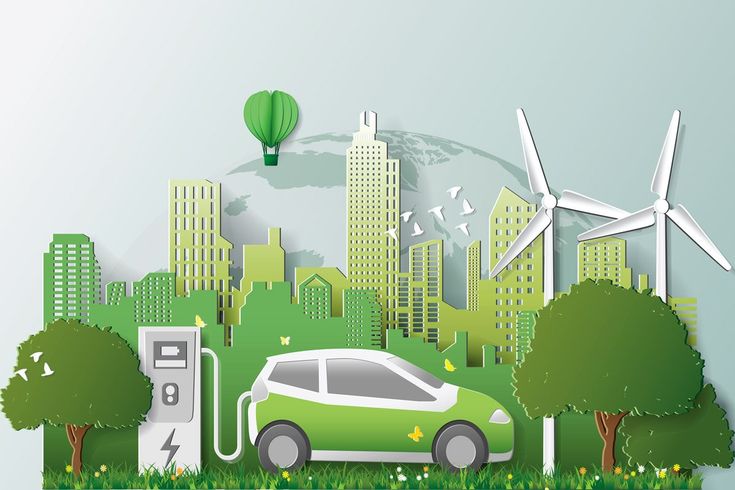Plug-in Hybrid Electric Vehicles (PHEVs) are often considered the perfect middle ground between traditional gasoline cars and fully electric vehicles (EVs). They combine an internal combustion engine with an electric motor and a rechargeable battery, allowing drivers to use electric power for short trips and gasoline for longer journeys.
However, despite their flexibility and fuel efficiency, PHEVs are not without drawbacks. Let’s explore some of the potential issues and challenges associated with PHEVs that both consumers and manufacturers face.
1. Limited Electric-Only Range
One of the most common issues with PHEVs is their restricted electric range.
Most PHEVs can only travel 30–60 km (20–40 miles) on electric power before switching to the gasoline engine.
This limited range reduces the vehicle’s ability to function as a true electric car, especially for those who drive long distances daily. Drivers might find themselves relying on gasoline more often than expected, which can undermine the purpose of owning a plug-in hybrid.
2. Higher Purchase Cost
PHEVs are more expensive than their conventional and hybrid counterparts due to their dual powertrains — an electric motor and a combustion engine — along with a larger battery pack.
Although government incentives can offset some costs, the initial investment can still be a barrier for many buyers. Over time, maintenance and repair costs can also rise due to the complexity of having two propulsion systems.
3. Complex Maintenance and Repairs
Unlike traditional vehicles, PHEVs come with two systems that need regular maintenance — the internal combustion engine and the electric components.
This makes maintenance more complex and expensive.
For example:
-
Battery cooling systems need inspection.
-
Electric motor and inverter systems require specialized technicians.
-
The gasoline engine still needs oil changes and exhaust maintenance.
Not all service centers are equipped to handle such hybrid systems, making repairs inconvenient in some regions.
4. Battery Degradation
Like all electric and hybrid vehicles, PHEVs rely heavily on lithium-ion batteries. Over time, these batteries degrade, leading to reduced electric range and performance.
Extreme temperatures, frequent fast charging, and long-term storage without use can accelerate battery wear. Replacing the battery can be costly, sometimes offsetting the savings made on fuel.
5. Weight and Space Constraints
Because PHEVs carry both a fuel tank and a heavy battery pack, they tend to be heavier than comparable gasoline or hybrid vehicles.
This additional weight can:
-
Reduce overall fuel efficiency when running on gasoline.
-
Affect acceleration and handling.
-
Limit available trunk space or cabin room due to battery placement.
Thus, while PHEVs are designed to offer versatility, they may sacrifice performance and space.
6. Real-World Fuel Efficiency May Be Overrated
While PHEVs often boast impressive fuel economy figures on paper, real-world performance can differ significantly.
If drivers don’t charge their vehicles regularly, the gasoline engine will operate more often, resulting in higher fuel consumption than advertised.
In some cases, PHEVs can even consume more fuel than regular hybrids if driven without proper charging habits.
7. Charging Infrastructure Challenges
For PHEVs to operate efficiently, regular charging is essential. Unfortunately, in many regions, charging infrastructure remains limited.
Without access to home or public chargers, PHEV owners might find it difficult to recharge frequently, making the electric mode underused and defeating the purpose of owning a plug-in hybrid.
8. Environmental Concerns
While PHEVs are marketed as eco-friendly vehicles, their environmental benefits depend on usage patterns.
If a PHEV is rarely charged and relies mostly on gasoline, it emits almost the same amount of CO₂ as a conventional car. Moreover, the production and disposal of lithium-ion batteries have their own environmental impact, raising questions about long-term sustainability.
9. Software and System Failures
Modern PHEVs are highly dependent on software and electronic systems that manage energy flow between the electric and gasoline systems.
Software glitches, faulty sensors, or calibration errors can lead to:
-
Incorrect fuel efficiency readings
-
Reduced battery performance
-
Unexpected engine activation
Such issues can be difficult to diagnose and may require specialized tools for repair.
10. Resale Value Uncertainty
As technology rapidly advances, older PHEVs can lose value faster than traditional vehicles.
Consumers may hesitate to buy used PHEVs due to:
-
Concerns about battery health
-
Reduced electric range
-
Expensive battery replacements
This uncertainty can make PHEVs less appealing in the second-hand market.
Conclusion
Plug-in Hybrid Electric Vehicles (PHEVs) provide an excellent bridge between gasoline and electric mobility, offering flexibility and reduced emissions when used correctly. However, they also come with challenges such as limited electric range, high maintenance costs, and reliance on charging infrastructure.
For consumers who can regularly charge their vehicles and mostly drive short distances, PHEVs can be a smart choice. But for those who can’t access charging facilities or often drive long distances, the benefits may not outweigh the costs.

